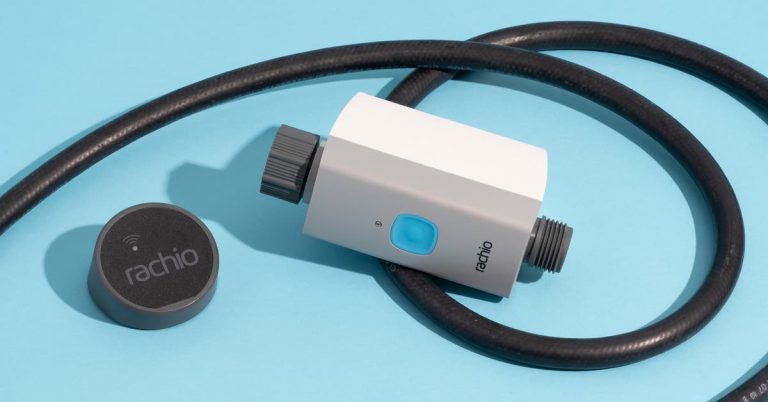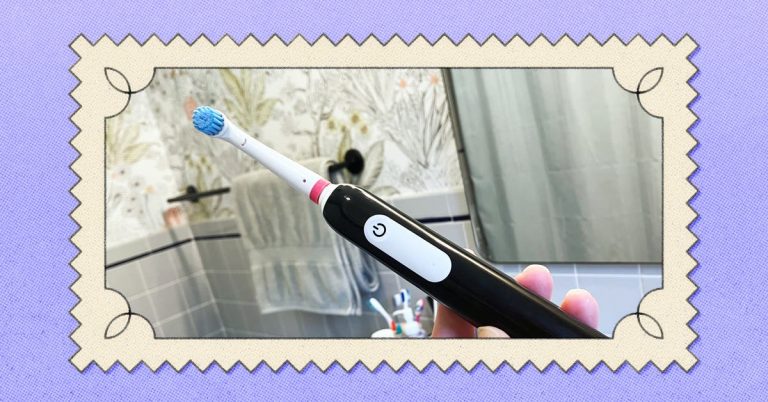The iPhone Air Is Apple’s Most Impressive Phone in Years. But Most People Shouldn’t Buy It.
While I love the Air’s glassy design, vivid screen, and powerful performance, it has some significant drawbacks that keep it from being the iPhone that most people should buy.
Its battery life is underwhelming. I am a power user, to put it mildly. A smartphone battery simply hates to see me coming. And thin phones have less room for a large battery — it’s just physics.
When I tested the slim Samsung Galaxy S25 Edge, which was released earlier this year, it lasted just 12 hours on a charge with my normal usage. So I was curious to see how Apple’s iPhone Air would compare.
To make the iPhone Air as thin as it is, Apple stored its internal components within what Apple calls a “plateau” beneath the camera module.
In addition to the camera lens, the plateau also includes the A19 Pro chip, the speaker, the C1X modem chip, and the N1 wireless-networking chip for Bluetooth and Wi-Fi. Storing the internal components in the module creates more space in the chassis for a battery.
Although Apple won’t confirm the exact size of the battery, the company claims that the iPhone Air can deliver all-day battery life and up to 27 hours of video playback — the same claimed battery life as with last year’s iPhone 16 Pro — due in part to that internal redesign and a powerful and efficient new chip.
But in my testing, I found that was not the case. Every iPhone 16 lasted far longer, and so does every iPhone 17 released this year. As with Samsung’s slim phone, I eked out 12 hours on a single charge of the iPhone Air. It’s important to note that, like many people, I use my phone for everything, including streaming videos and music on YouTube and Spotify, collaborating in Slack, editing in Google Docs, or catching up with family and friends on FaceTime.
On my first full day with the iPhone Air, I unplugged the phone from its charger at 9 a.m. I made a few phone calls that added up to a total of 20 minutes, plus a half-hour FaceTime call. I also scrolled through social media and browsed the web here and there throughout the day, for a total of about an hour and a half. By 7 p.m., 10 hours later, the iPhone Air had just 6% of its battery life left.
On the second day, I enabled the always-on display and a new iOS feature called Adaptive Power Mode, which kicks in once the phone learns your usage patterns and will extend the life of the battery if it detects that the phone won’t last until the end of the day. (It takes seven days for the new setting to learn those patterns and kick in.)
I unplugged the iPhone Air, fully charged, at 7 a.m. I used it to stream a 90-minute audio podcast on Spotify, scrolled through TikTok for an hour, and took a 20-minute phone call, and the iPhone Air was at 55% by 12 p.m. Over the course of the workday, I mostly left it alone except for answering the occasional text or quickly checking social media and my email. I also used it to take a 10-minute phone call. On my train ride home from the office, I used it to send some more texts and scroll through Instagram for about half an hour, and it was at 2% by 7 p.m., a total of just 12 hours of battery life.
It’s possible that the always-on display’s adaptive refresh rate, which can lower to 1 Hz or max out at 120 Hz depending on what you’re doing, helped to extend the battery life. I plan to do more testing once Adaptive Power Mode fully learns my phone-usage habits, and I will update this review with my findings.
Either way, however, the iPhone Air simply doesn’t last as long as other iPhones. Results will vary depending on your usage, of course, but the iPhone Air’s battery limitations might force you to be intentional about how you use your phone on days you aren’t near a charger, or else attach a battery back, which defeats the proposition of the ultrathin phone.
The MagSafe battery pack for the iPhone Air helps, but it’s an extra $100. Apple released a new MagSafe charger specifically for the iPhone Air, which the company claims will extend the phone’s battery life by up to 40 hours of video-playback time. It’s slimmer and lighter than the standard MagSafe battery pack, but it turns the slimmest and lightest iPhone into a regular-size one.
It gets the job done. While I was out to dinner, I used the battery pack to charge the iPhone Air, when both the phone and the battery pack were at 50%. It charged the phone 22% in about 44 minutes before the MagSafe battery fully died. But after testing the entire 2025 iPhone lineup, I can say that buying an $1,100 iPhone 17 Pro gives you more bang for your buck than buying a $1,000 iPhone Air and a $100 battery pack.

At least the iPhone Air charges quickly. Apple claims that the iPhone Air can charge up to 50% in 30 minutes with a 20 W adapter or higher. With Apple’s new 40 W dynamic charger (which, like the MagSafe battery, is also sold separately), our iPhone Air charged from 4% to 54% in 27 minutes.
The iPhone Air gets warm. Unlike the pricier iPhone 17 Pro and 17 Pro Max, the iPhone Air doesn’t have a vapor-chamber cooling system, but supposedly, the location of the A19 Pro chip in the plateau improves both airflow and thermal performance. The iPhone Air also has the same aluminum spreader as the rest of the lineup, which is intended to help disperse the heat more effectively throughout the internals.
In practice, though, the iPhone Air would still get really warm during the simplest of tasks. I felt it heat up on my lap while I was using it to talk to a friend on the phone, while shopping online using Safari, while sending links of options to my group chat on Messages, while talking on a FaceTime call with a friend, and while charging it.
It didn’t happen all the time, but it did occur during tasks that usually don’t generate heat on other iPhones. I wouldn’t recommend using this phone as a mobile gaming device or for heavy-duty photo and video editing.
The rear camera lens is fine, but the iPhone 17 and 17 Pro are better in that regard. Like the $600 iPhone 16e, the $1,000 iPhone Air has a single camera lens. The iPhone Air’s lens is a 48-megapixel camera that combines four lenses into one. It comes with 1x optical zoom and 2x optical-quality telephoto zoom, but no telephoto lens.
It shoots 24-megapixel and 48-megapixel images (which you can switch between via the Camera settings) using the main camera, and it takes 12-megapixel optical-quality images when you’re capturing photos using the 2x telephoto lens (with up to 10x digital zoom). But it has no ultrawide lens, and you also lose out on features like Macro mode and Cinematic mode in video.
The front-facing camera is 18 megapixels and comes with support for new features such as Dual Capture (which allows you to record using the front-facing and rear cameras simultaneously) and Center Stage (which keeps you in frame during video calls and expands to a wider field of view for group shots).

As someone who uses their smartphone camera only to capture important memories or to take snapshots of random things throughout the day to send to friends, I thought I would be content with the single camera on the iPhone Air. I typically take all my photos at 1x anyway — I rarely use the telephoto or ultrawide lens. But during a night out for a friend’s 40th birthday, where I took both the iPhone Air and the iPhone 17 Pro Max, I found myself reaching for the latter.
On its own, the iPhone Air’s rear camera is very capable and almost on a par with its Pro-level counterparts. It delivers high-quality shots that are sharp and vibrant, with a good balance of exposure. The same applies to low-light images for the most part, though in some instances such images were underexposed and a bit noisy, and the colors looked muted.
But in comparison with the iPhone 17 Pro Max, it’s easy to prefer one over the other. The Pro Max also packs a 48-megapixel main sensor, but it’s larger than the one on the iPhone Air, which allows it to capture more light for higher-quality images, especially in dim environments.
The 17 Pro Max’s photos looked richer, skin tones appeared more accurate, and the camera system managed to handle various lighting conditions better. It was also nice to have the addition of an ultrawide camera for group photos. (That doesn’t mean you need to get a 17 Pro Max, though. The iPhone 17’s dual cameras should be plenty for most people.)
The lone speaker isn’t great for blasting music or podcasts. In addition to one camera lens, the iPhone Air also comes with only one speaker. I often put phone calls on speaker when I’m at home or in the car, and I use my phone to play a lot of podcasts and stream videos while doing my makeup. I’m used to the stronger soundstage that dual speakers provide.
During my testing, I would often set the iPhone Air to max volume to hear people on the phone or when listening to music. If you typically use earbuds to listen to audio, this shouldn’t be an issue. But it feels like a phone this expensive should at least come with two speakers.






